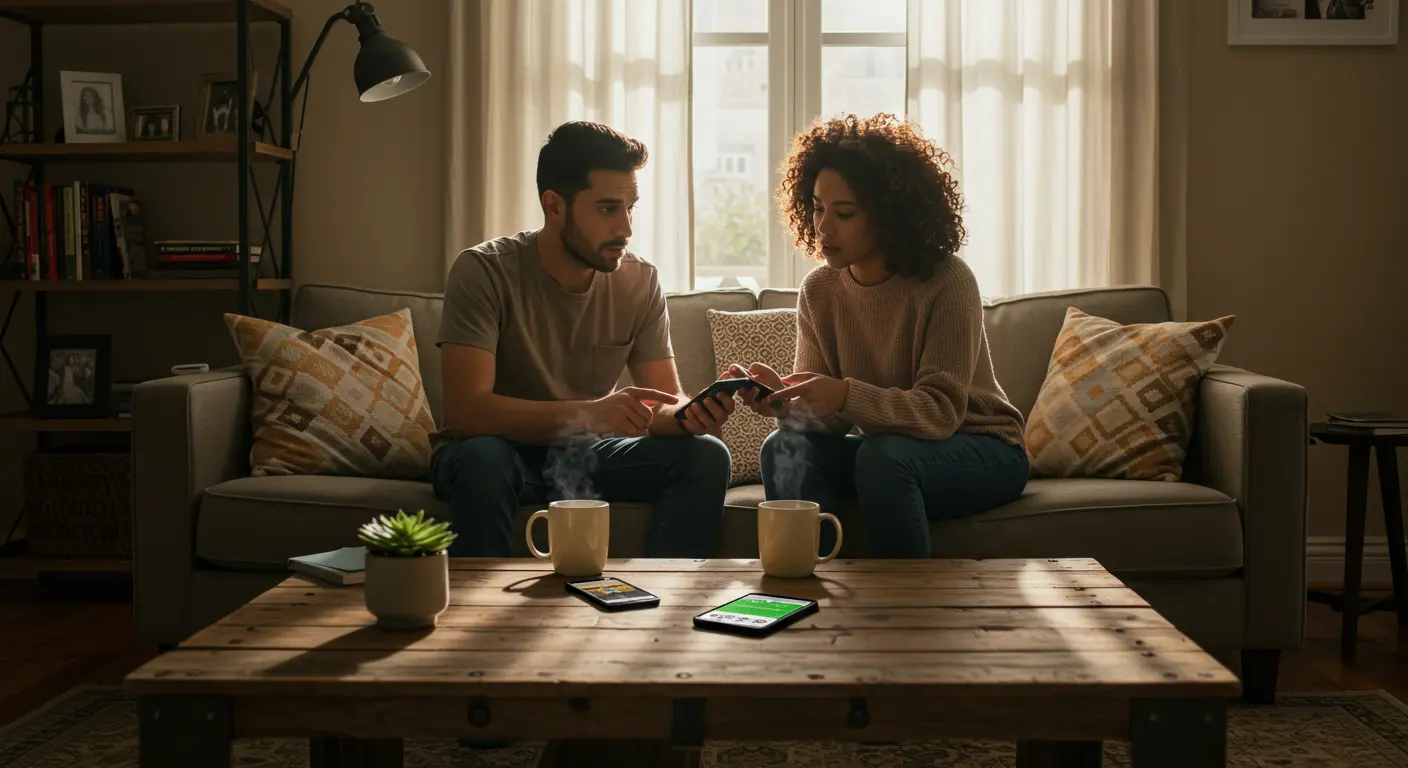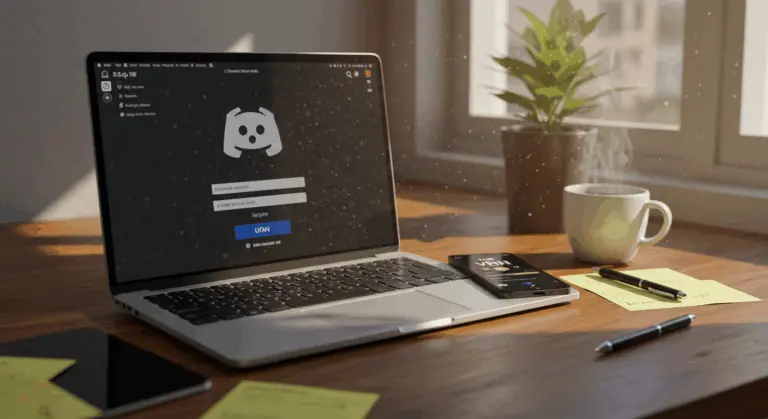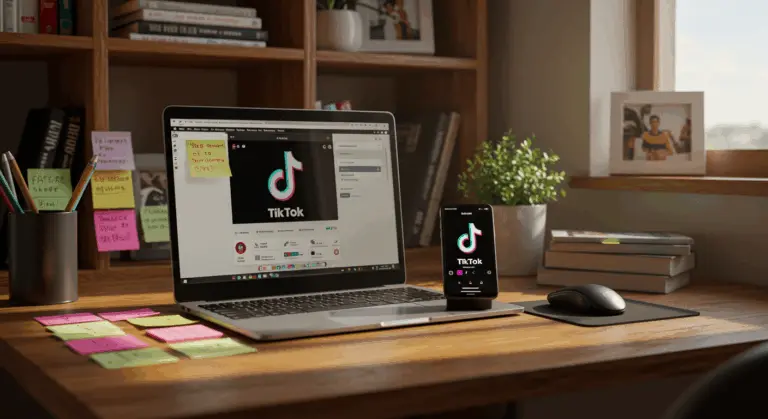Is Sharing Location Toxic? Understanding the Risks and Benefits
Understanding Location Sharing in Relationships
Location sharing has become ubiquitous in modern relationships, integrated into our smartphone-dependent lives. While it serves numerous purposes, what matters most is the intentions behind its use and the dynamics it creates between partners.
Practically speaking, many couples rely on it for:
-
Knowing when a partner will arrive home.
-
Ensuring safety during late-night travel or outings.
-
Coordinating meetups without constant texting.
But the motivations often reveal far more complex relationship undercurrents.
Studies show: location sharing frequently emerges when trust has already fractured within a relationship. Partners may turn to digital tracking for reassurance, particularly following incidents of betrayal or dishonesty. While this technological solution seems reasonable, relationship experts warn that apps and algorithms rarely heal the wounds of broken trust.
When relationships operate from a foundation of trust, location sharing usually has clear, practical reasons:
-
Safety: Checking on a partner who is hiking alone or traveling in an unfamiliar area.
-
Coordination: Estimating arrival times to simplify daily logistics.
-
Peace of Mind: Providing reassurance during unusual circumstances.
What matters is Whether it functions as a helpful convenience or becomes a digital surveillance system.
Unfortunately, even well-intentioned location sharing can spiral into something more sinister. Demanding friends, helicopter parents, and insecure partners misuse these tools, transforming it from convenience into control. Many users describe feeling cornered into participation, creating relationship strain and genuine mental health concerns. The awkwardness of refusing a location-sharing request adds yet another layer of complexity to these contemporary challenges.
Benefits of Sharing Location
Despite legitimate concerns, location sharing offers real advantages that explain why so many people use it and social circles.
Safety stands out as the strongest reason for sharing whereabouts. Real-time location data has proven invaluable during emergencies—documented cases include solving crimes and saving lives. In one notable case involved someone experiencing anaphylactic shock who was located and rescued specifically because of location sharing technology. For parents, partners, and friends alike, knowing a loved one’s whereabouts provides genuine peace of mind during late-night adventures or journeys through unfamiliar territory.
Convenience matters just as much as safety concerns. Location sharing eliminates constant texting about whereabouts, allowing couples and families to coordinate seamlessly. Relationship therapist Nicole Saunders observes that this technology offers a practical solution to the universal frustration of waiting for replies.
Social coordination gets much easier with location sharing. Finding friends in crowded venues or navigating unfamiliar locations becomes a simple tap on your screen. Instead of exchanging confusing directions peppered with landmarks like “the blue building near the coffee shop,” friends can pinpoint each other’s exact location instantly. For couples, it enables discreet check-ins without interrupting important moments—particularly valuable when someone is driving, presenting in meetings, or otherwise engaged.
It can also prevent potential arguments by providing concrete information about delays or unexpected detours. Traffic jams become explanations rather than excuses. Though not necessary for every couple, thoughtful location sharing can genuinely enhance communication while reducing daily friction.
Potential Risks of Location Sharing
Despite its undeniable benefits, location sharing carries real dangers that can transform helpful technology into a tool for abuse. Privacy experts and relationship therapists have documented alarming patterns that emerge when location sharing crosses the line from convenience to obsession.
Within toxic relationships, constant location monitoring turns into digital stalking. There are cases where abusive partners using these apps to control and terrorize their victims’ every movement. Predators have used Snapchat’s location features to identify and target potential victims. Jealous partners have used tracking data to enforce suffocating restrictions on their significant others’ social lives and personal freedom.
Relationship counselor Kurt Smith warns that location sharing often weakens trust instead of building it. According to Smith continuous tracking often leads to a pattern of suspicion—minor deviations from expected routes become triggers for doubt and interrogation. This digital dependency gradually replaces healthy communication, ultimately eroding the very foundation it was meant to protect.
Even within otherwise healthy relationships, location sharing creates mental stress. Many users report experiencing anxiety when deviating from routine patterns, knowing their movements are under constant observation. This persistent sense of being monitored can feel suffocating, constraining personal freedom and spontaneity. The unspoken obligation to justify every unexpected detour or impromptu stop becomes mentally exhausting over time.
The situation makes all the difference. Location sharing that begins organically for practical purposes usually stays helpful. However, when introduced as a response to broken trust—particularly following infidelity—it often becomes a toxic monitoring system instead of actually rebuilding trust. When this happens, obsessive checking becomes common, with the betrayed partner compulsively verifying locations hoping that monitoring will restore their sense of security.
What’s particularly troubling is the subtle social pressure surrounding location sharing requests. Declining to share your whereabouts often leads to awkward conversations or implications of secretive behavior, creating interpersonal friction that many find easier to avoid by simply complying. This dynamic makes it incredibly difficult to maintain healthy boundaries around digital privacy, even when sharing feels invasive or uncomfortable.
The Role of Trust and Consent
Healthy location sharing depends completely on two fundamental pillars: mutual trust and explicit consent. When either element crumbles, what begins as innocent convenience quickly becomes a destructive dynamic that poisons relationships. Studies show that location tracking becomes problematic when it emerges from underlying trust deficits rather than genuine practical needs.
Relationship experts notice a concerning trend where location sharing becomes a demand rather than a request. In these situations, one partner typically insists on constant location access, driven by jealousy, deep-seated insecurity, or unresolved trauma from previous relationships. This one-sided approach turns neutral technology into a surveillance apparatus creating unhealthy relationship dynamics. As therapist Nicole Saunders observes, “If location sharing comes from suspicion rather than convenience, it rarely addresses the fundamental trust issues at play.”
Real consent is just as important in maintaining healthy dynamics. Authentic consent happens naturally, without coercion or emotional manipulation in the background. Many individuals describe feeling pressured to share their whereabouts simply to avoid awkward conversations or accusations of concealment. This pressure destroys the voluntary nature of consent, creating lasting resentment.
Open communication about expectations and limitations is necessary when introducing location sharing into any relationship. Partners need to talk openly about their motivations for sharing locations, how the information will be utilized, and what boundaries exist around monitoring behaviors. This communication creates clarity and prevents misinterpretations that might cause problems. For instance, agreeing that location sharing serves safety purposes during late-night travel, but not constant surveillance during social activities creates clear parameters that honor both individuals’ autonomy.
Location sharing itself isn’t good or bad by itself. What matters is the context and intentions behind using it. When both partners genuinely agree to share whereabouts with reasonable boundaries and mutual respect for privacy, location sharing can enhance safety and convenience without compromising relationship health. The key is making sure digital tools support trust that already exists instead of trying to replace it.
Establishing Healthy Boundaries
Establishing and maintaining healthy boundaries around location sharing helps protect both relationship wellness and individual autonomy. Effective boundaries begin with honest conversations about comfort levels and personal limits. These discussions should address specific scenarios—whether location sharing feels appropriate during work hours, social gatherings, or exclusively during travel—instead of assuming blanket policies.
Relationship therapists suggest making explicit agreements about how location information will be used. Partners might agree that checking locations makes sense when coordinating meetups or ensuring safety, but becomes problematic when it’s used for monitoring social activities or showing up unexpectedly. Dr. Lisa Firestone, a clinical psychologist, explains: “Healthy boundaries around location sharing distinguish between caring about someone’s whereabouts and surveillant their every movement.”
Frequency of location checking is another important limit to set. Constant monitoring usually indicates underlying anxiety or control issues that location sharing actually makes worse instead of fixing. Couples should discuss reasonable check-in patterns while being honest about behaviors that might trigger discomfort. Some find value in establishing technology-free periods where location sharing apps are temporarily disabled, creating breathing room for privacy without secrecy.
Boundaries should also cover how partners respond to location information. When someone notices their partner isn’t where expected, the best response is respectful inquiry rather than immediate accusations. This difference matters—location data provides coordinates but never context. Jumping to conclusions based on incomplete information usually hurts trust instead of helping it.
Most importantly, boundaries should include a clear exit strategy. Both parties need genuine freedom to temporarily pause or permanently end location sharing without facing emotional manipulation or relationship consequences. This choice means consent stays genuine instead of forced. As relationship expert Esther Pearl notes, “True intimacy requires both closeness and space—the ability to share your location should never cost you your sense of personal freedom.”
The digital revolution has changed how we share personal information, with location tracking becoming increasingly normalized across countless apps and services. This change creates both remarkable convenience and unexpected complications. Modern smartphones come with many location-sharing options—from dedicated safety apps like Life360 to integrated features within messaging platforms such as WhatsApp, Snapchat, and Google Maps. Each platform offers varying degrees of control over visibility and duration.
Privacy experts emphasize that most users don’t realize the extensive data collection happening with these apps. When you share your location with a partner or friend, you’re simultaneously sharing it with the company providing the service. Dr. Jen King, Privacy and Data Policy Fellow at Stanford University, warns: “Most location-sharing apps collect and store detailed movement patterns that can be monetized through advertising or sold to third parties. This raises privacy concerns that go well past the immediate relationship context.”
The technical mechanics of location sharing create other worries. Many apps run constantly in the background, draining battery life while potentially tracking movements even during inactive periods. Some services provide detailed options—time limits on sharing, geo-fencing notifications, or options to share approximate rather than precise locations. Learning about these features helps users to make informed decisions about which tools align with their privacy values.
Digital literacy is important for handling these privacy challenges. Users should regularly audit which apps possess location permissions, understand how to temporarily pause sharing without raising suspicion, and know how to permanently revoke access when necessary. Privacy settings should be checked regularly since app updates often change how location data is collected and shared. Knowing these details allows for intentional use of location-sharing tools instead of just accepting constant visibility.
Privacy-conscious individuals have other options that provide similar benefits with greater personal control:
-
Scheduled Check-ins: Agreeing to text at specific times.
-
ETA Sharing: Manually sharing estimated arrival times.
-
Temporary Sharing: Using the feature only during specific activities, like a late-night commute.
These methods balance between safety coordination and personal privacy preservation.
Impact of Technology on Relationships
Conclusion: Is Location Sharing Toxic?
After examining location sharing from multiple angles, the answer is clear: the practice itself isn’t toxic by nature. Instead, how and why it’s used determines whether it becomes a helpful tool or a destructive force. Location sharing becomes problematic when it stems from or reinforces unhealthy relationship patterns instead of serving as genuine mutual convenience.
Whether location sharing becomes toxic depends on three fundamental factors:
-
Consent: It must be freely given by both parties without pressure.
-
Motivation: The reason should be convenience or safety, not jealousy or suspicion.
-
Boundaries: Clear rules must be established regarding its use.
When these elements remain healthy, location sharing functions as a practical tool. When they deteriorate, it transforms into a mechanism for control and manipulation.
Relationship experts all agree that location sharing should improve communication, not replace it. When technology becomes a substitute for honest conversations about trust and expectations, it stops the real connection that keeps relationships strong.
The clearest sign of healthy versus toxic location sharing is how both parties feel about temporarily disabling it. In relationships where location sharing really improves the relationship without creating problems, partners feel completely comfortable occasionally turning off the feature without triggering suspicion or anxiety. Conversely, when the mere suggestion of privacy sparks conflict or accusations, this suggests location sharing might be making serious problems worse.
Location sharing acts like a mirror, showing what the relationship is already like, not changing it. What matters isn’t the technology, but the ongoing communication, trust, and mutual respect between partners. The goal should always be ensuring it remains a bridge for connection, never a tool for control.







